Abstract
A neurophysiological study of a behavioral phenotype caused by a sex-linked single gene mutation has been performed with gynandromorphs, mosaic for the mutant gene, Hyperkinetic1P (Hk1P), in Drosophila melanogaster. The male tissue of this gynandromorph is hemizygous for Hk1P, while the female tissue is heterozygous. The characteristic neural activity caused by the Hk1P gene can be recorded only in the presumptive male region of the thoracic ganglion. Motor regions of one side were found to function independently of their counterparts in the opposite side of the thoracic ganglion and were unaffected by the genotype of other parts of the body. Thus, expression of the Hk1P gene is autonomous in the genetic sense, and each side of the ganglion is independent of the other side. Also, there is a high correlation between the external genotype and the genotype of underlying neural tissue of the thorax.
Full text
PDF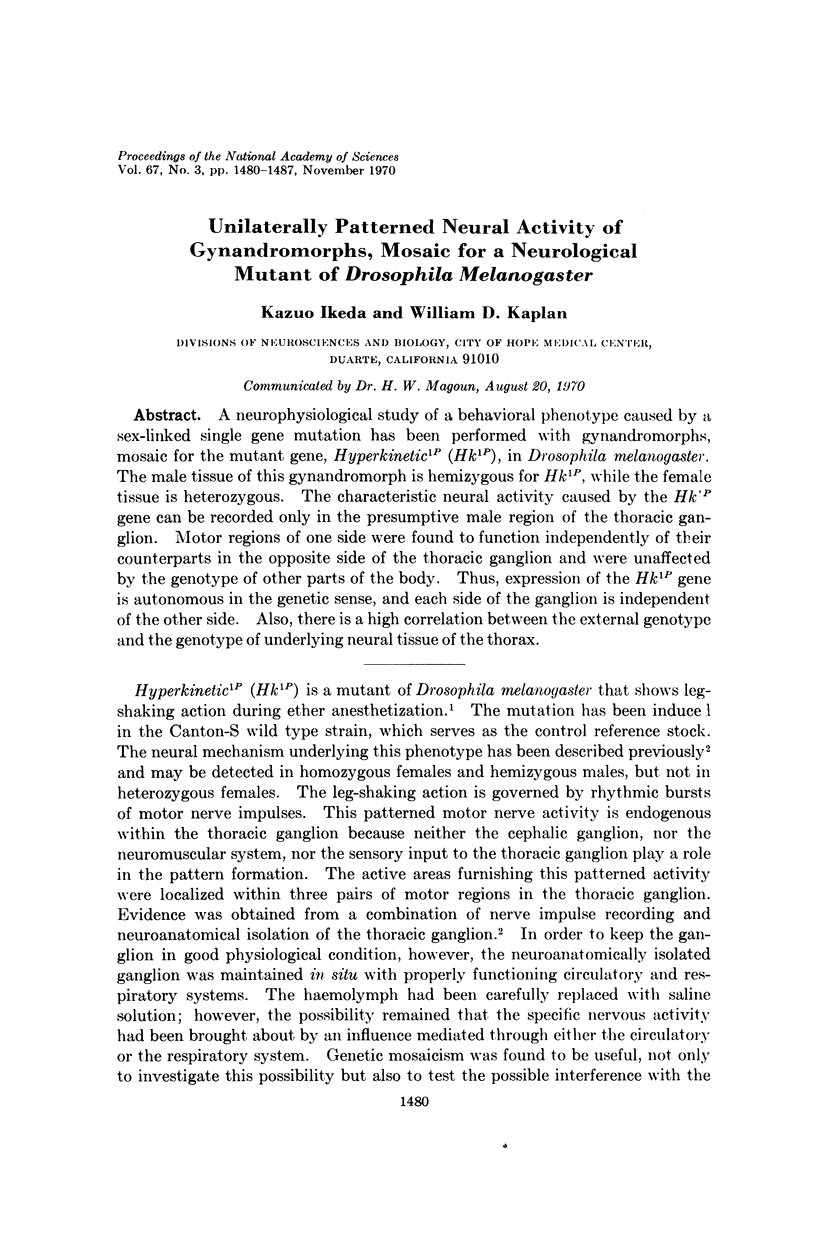
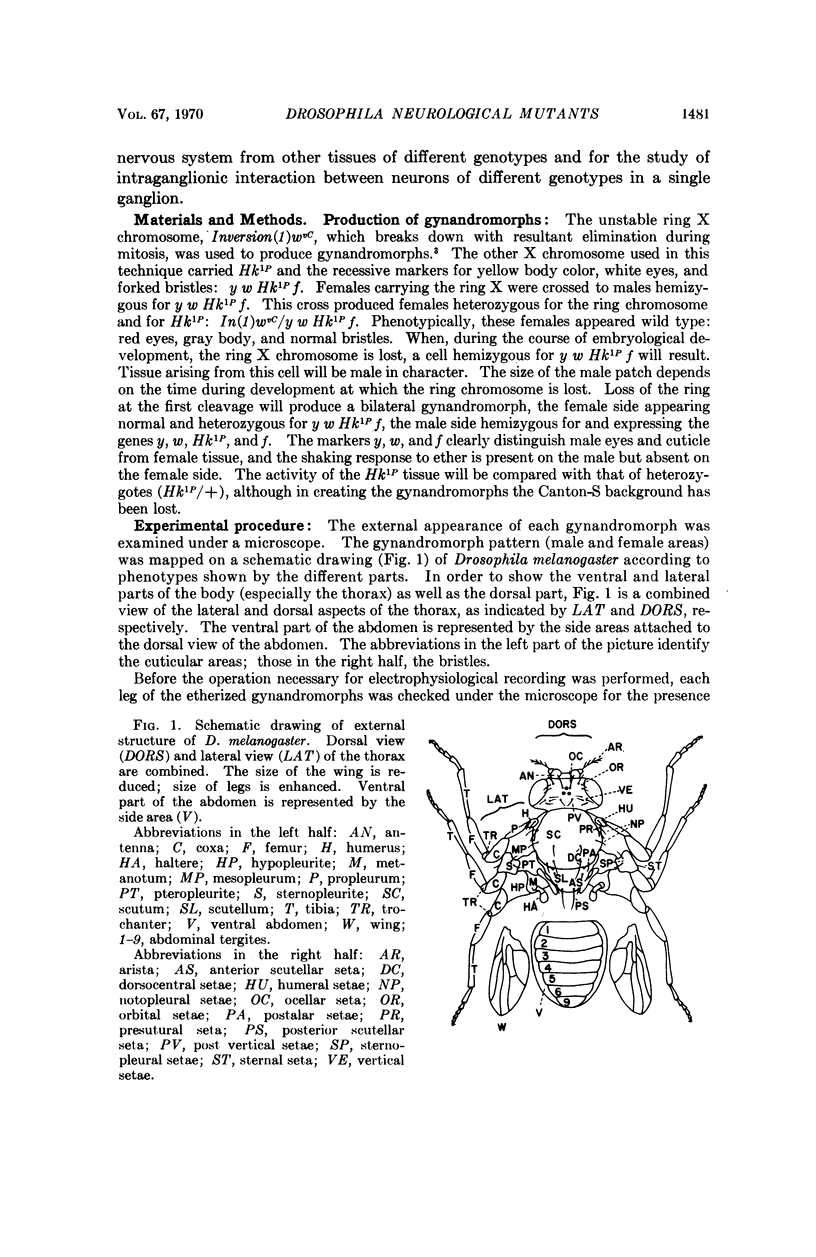
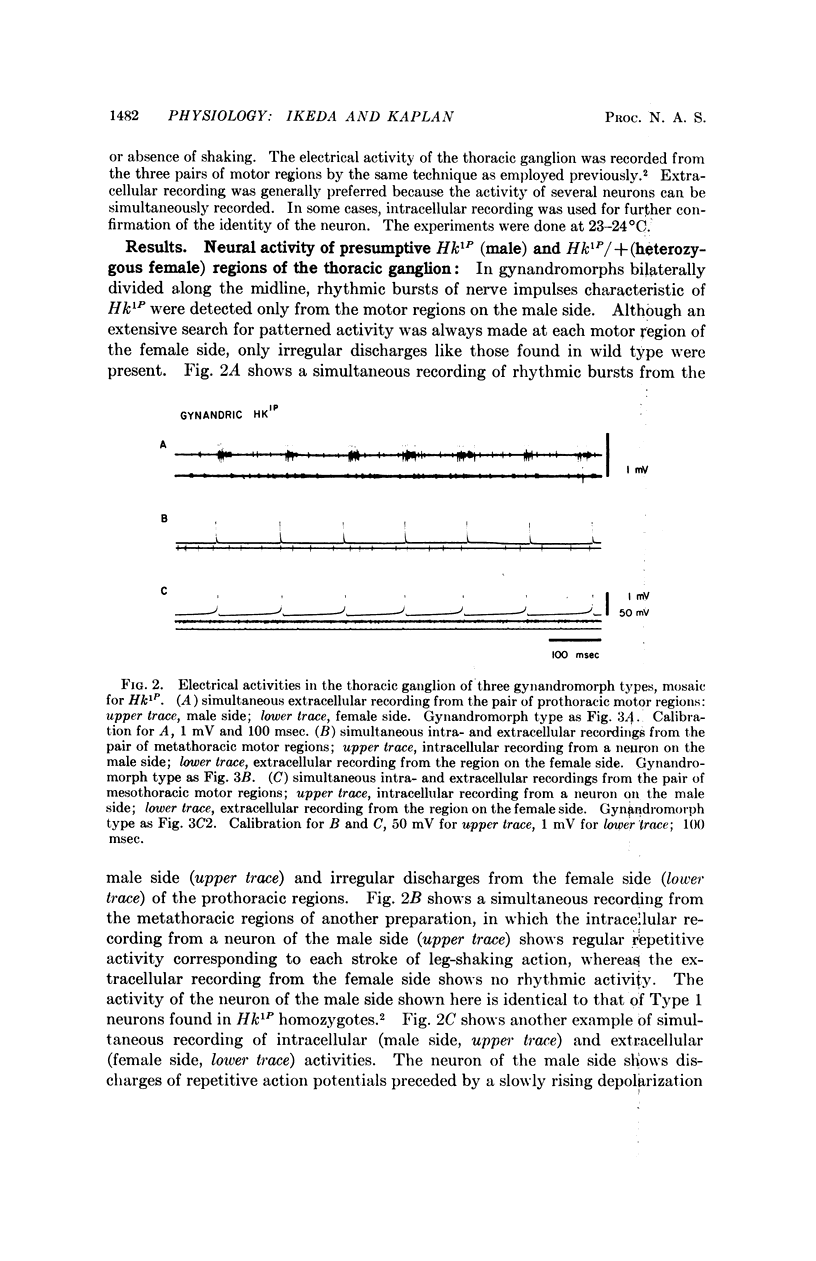
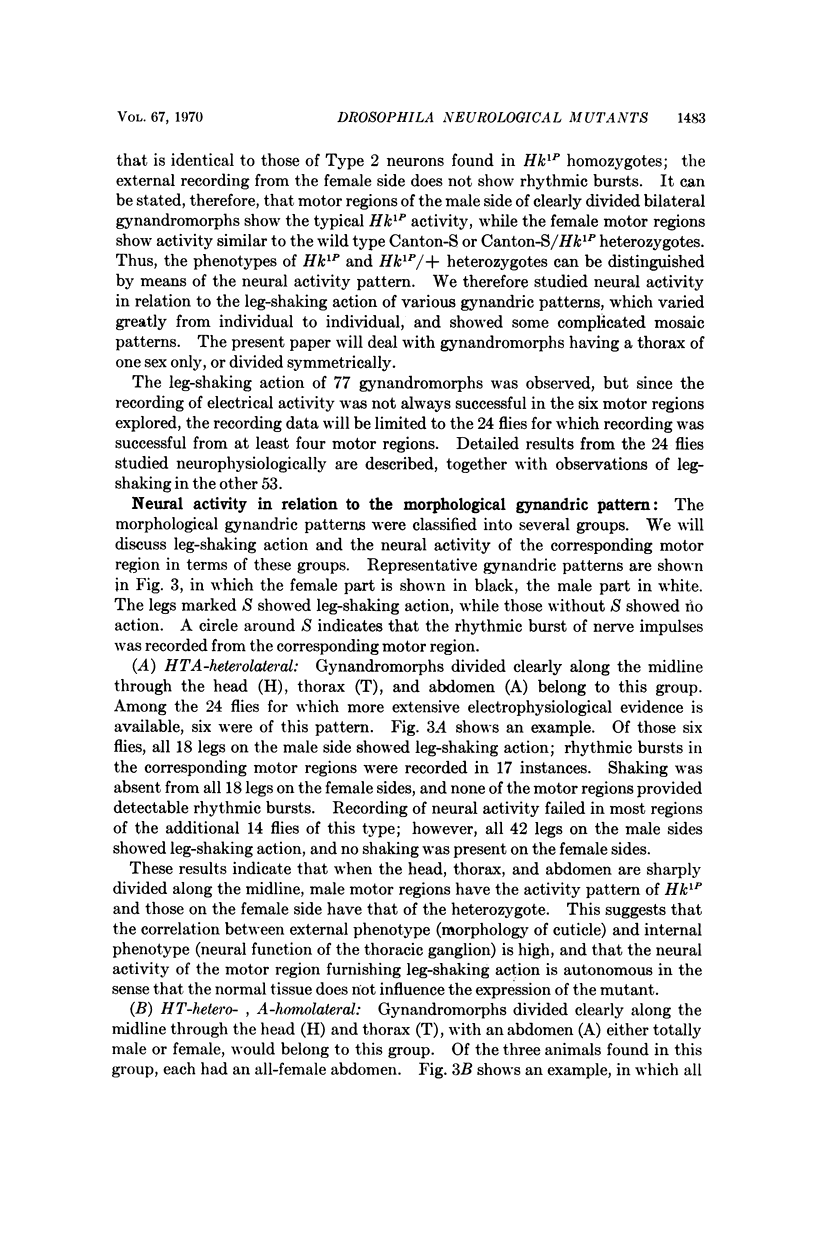
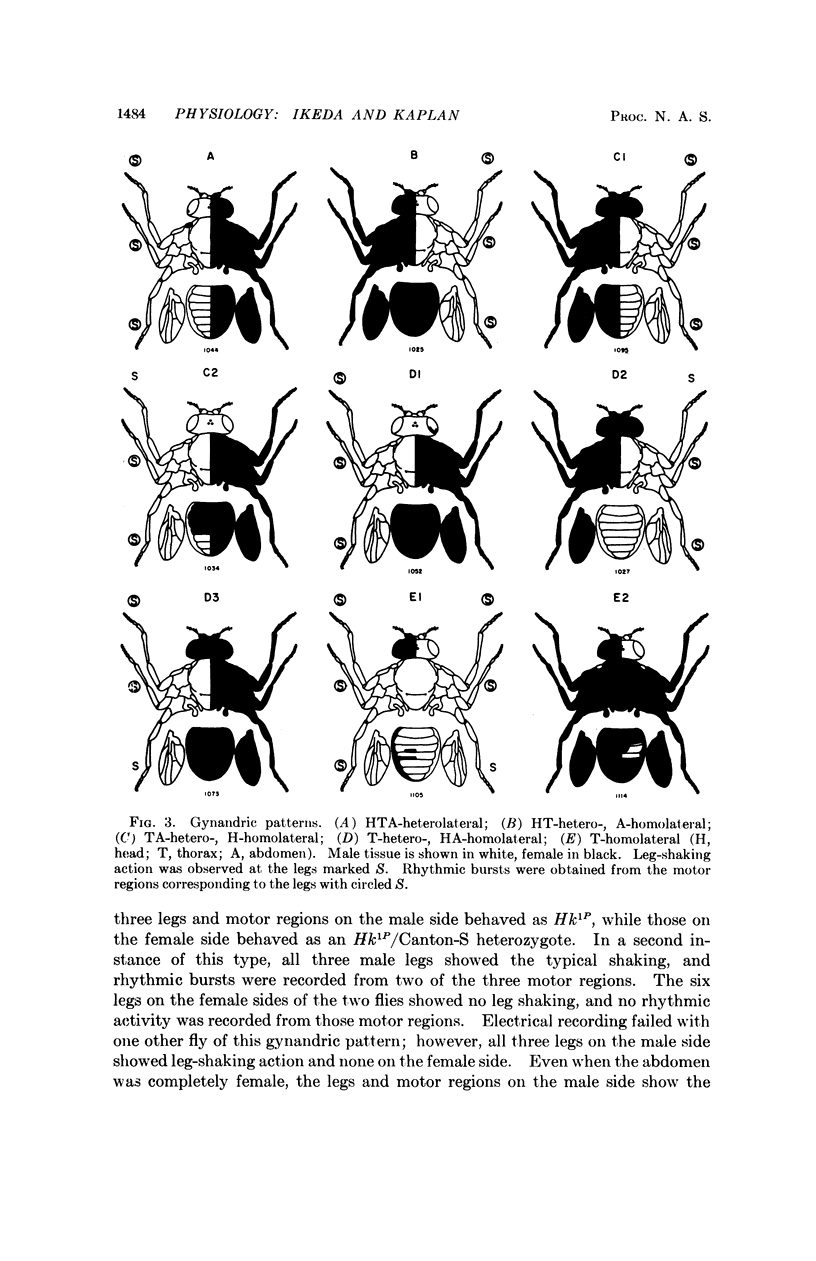

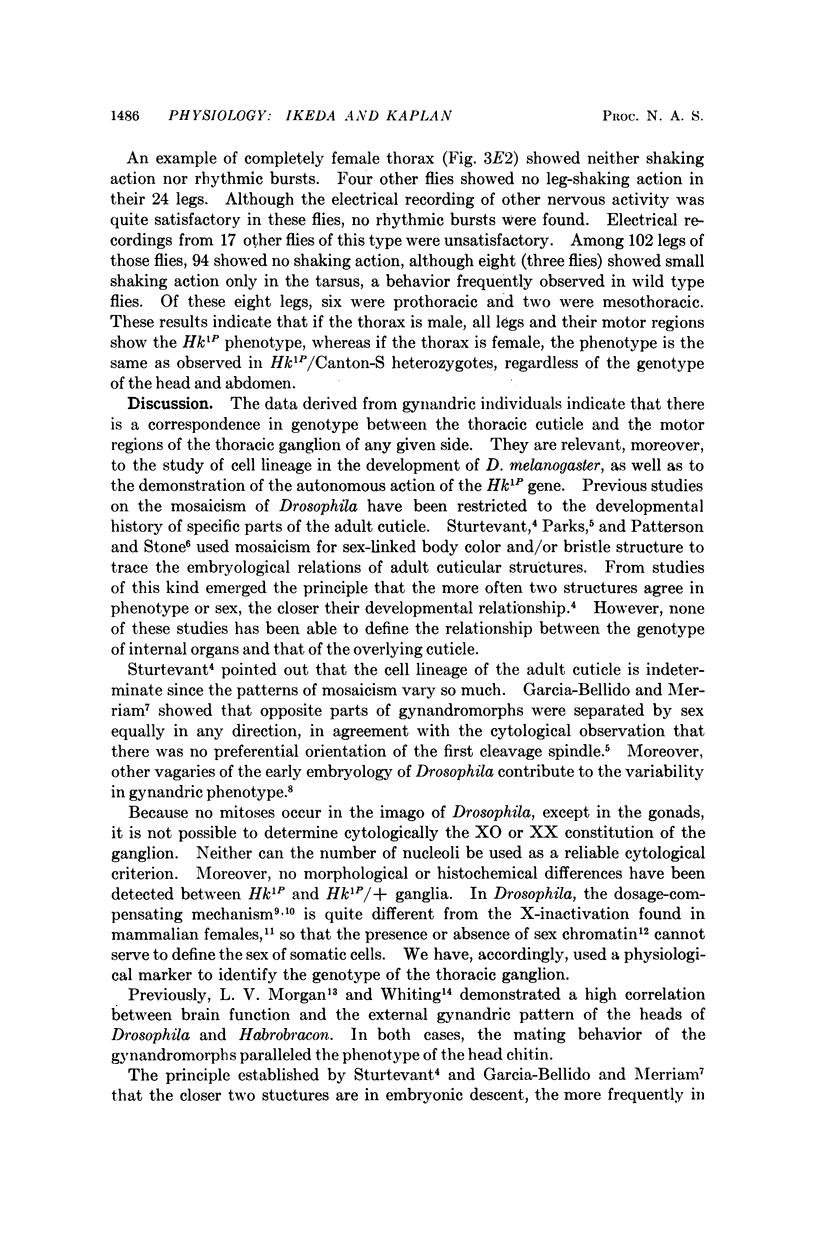
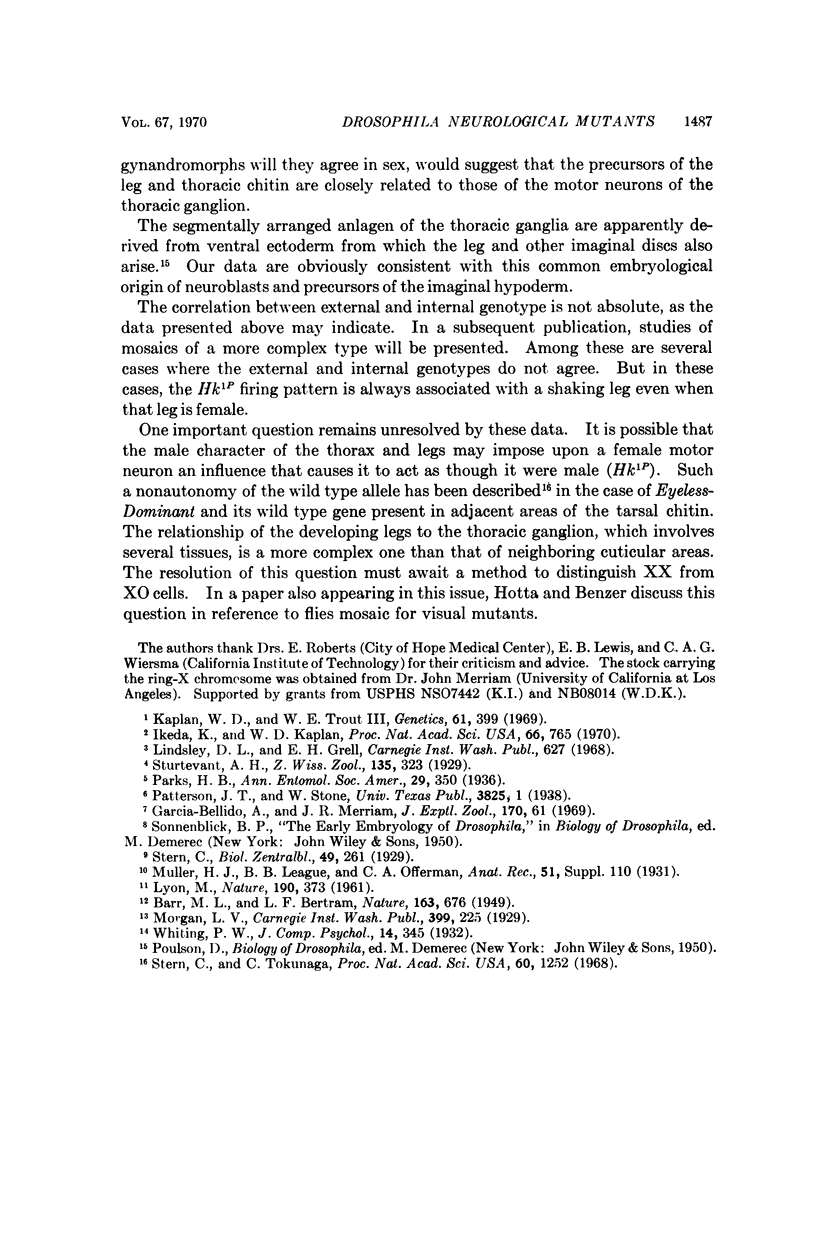
Selected References
These references are in PubMed. This may not be the complete list of references from this article.
- Garcia-Bellido A., Merriam J. R. Cell lineage of the imaginal discs in Drosophila gynandromorphs. J Exp Zool. 1969 Jan;170(1):61–75. doi: 10.1002/jez.1401700106. [DOI] [PubMed] [Google Scholar]
- Ikeda K., Kaplan W. D. Patterned neural activity of a mutant Drosophila melanogaster. Proc Natl Acad Sci U S A. 1970 Jul;66(3):765–772. doi: 10.1073/pnas.66.3.765. [DOI] [PMC free article] [PubMed] [Google Scholar]
- Kaplan W. D., Trout W. E., 3rd The behavior of four neurological mutants of Drosophila. Genetics. 1969 Feb;61(2):399–409. doi: 10.1093/genetics/61.2.399. [DOI] [PMC free article] [PubMed] [Google Scholar]
- LYON M. F. Gene action in the X-chromosome of the mouse (Mus musculus L.). Nature. 1961 Apr 22;190:372–373. doi: 10.1038/190372a0. [DOI] [PubMed] [Google Scholar]
- Stern C., Tokunaga C. Autonomous pleiotropy in Drosophilia. Proc Natl Acad Sci U S A. 1968 Aug;60(4):1252–1259. doi: 10.1073/pnas.60.4.1252. [DOI] [PMC free article] [PubMed] [Google Scholar]


